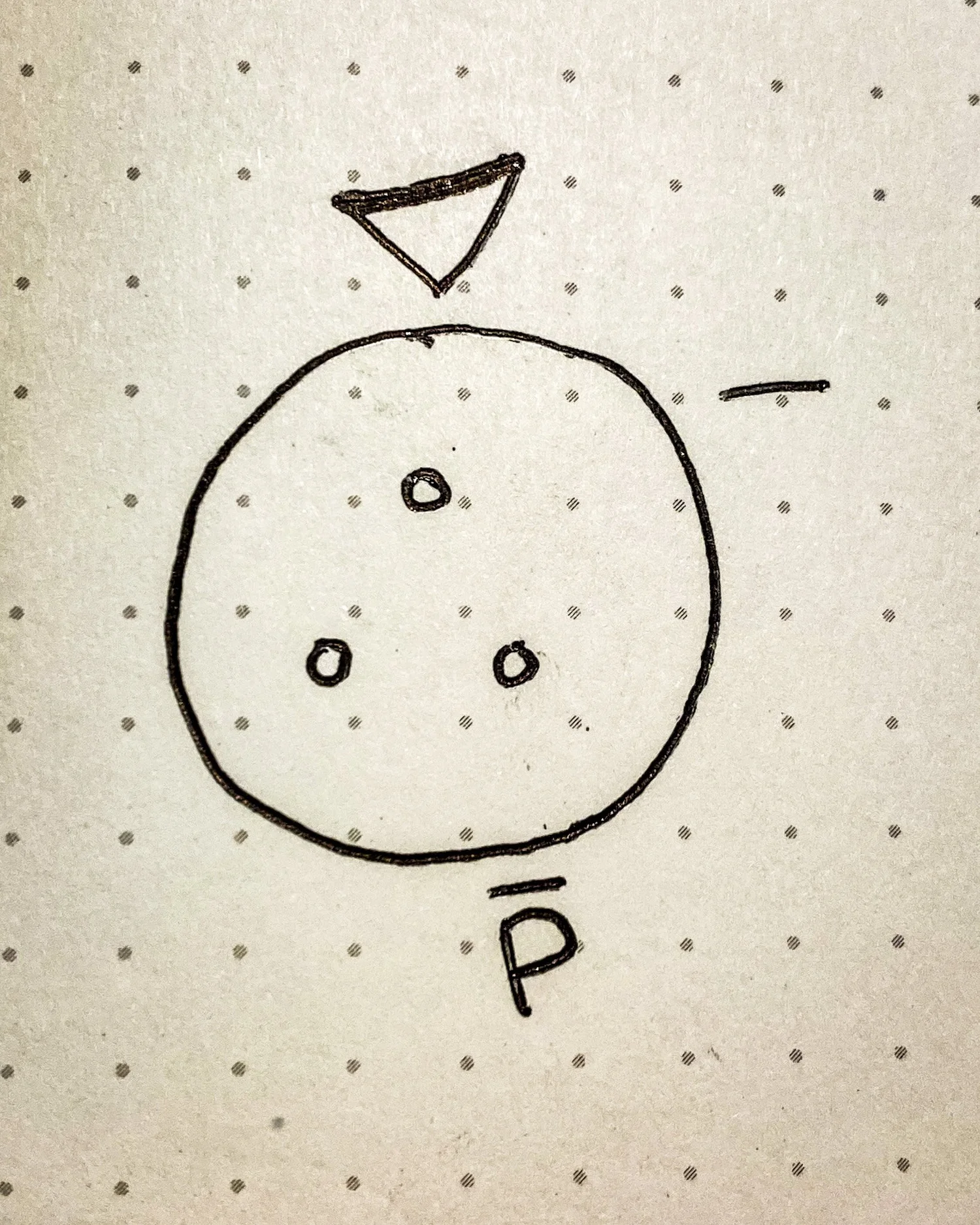
The Antiproton
Antiparticles are everywhere. They’re just part of life. The electron has its positron partner. Muons and antimuons are both routinely created in the upper atmosphere. They’re so familiar that we often just call them mu plus or mu minus. The antiparticle nature of mu plus just isn’t that big a deal.If you’ve been paying attention to our series, you know we’ve talked about antiparticles quite a bit, at least in passing. Up and down quarks sometimes associate with anti-up and anti-down quarks to form pions. Other mesons like kaons form similar quark-antiquark pairs.
It’s fun to see composite particles made up from particles and antiparticles. The neutral pion - for example - is a bound state of particle/antiparticle partners - uu(bar)and dd(bar) - not unlike positronium: where an electron and a positron orbit each other like an atom.
Of course, all these composite particles are unstable.
Arguably what separates antimatter from antiparticles is finding a composite particle that is stable. Or at least really long lived. Something that looks and behaves like ordinary matter. Something like atoms.
Enter the antiproton.
Just like the proton, the antiproton is a tiny bag of subnuclear goo. Virtual pions and gluons and other quantum effects are all dressed up in the antiproton package around three valance antiquarks. That’s two anti-up quarks and one anti-down quark. The antiproton looks virtually identical to the proton - except that it has a negative electric charge.
Like the proton, the antiproton has a mass of about 931 MeV. In fact, it’s difference from the proton’s mass has been measured, and at present it looks like they’re the same up to less than one part in a million!
In fact, everything they measure from the antiproton seems to to line up exactly with the proton. The magnetic moment - a measure of a little dipole magnetic field generated by the anti proton - still appears to be equal and opposite to that of the proton.
Antihydrogen
And yes, the negatively charge antiproton can pick up a positively charge positron and form an atom. Like hydrogen. You know, Antihydrogen! Antihydrogen has been studied and confirmed to look and behave exactly like hydrogen. The positron energy levels of thes anti atom and the associated electromagnetic spectra are all the same. Even the fancy, hyperfine splitting of those energy levels have been experimentally shown to be identical with ordinary hydrogen, at least up to experimental precision.Antiproton decay
By all observations so far, the proton appears to be a stable particle. If the proton did decay, it would be big news and a boon for folks looking to study physics beyond the standard model.The antiproton - so far as we can tell - is also stable. Which is good - our theory is self consistent - but it does present the question: if they don’t decay, then where are all the antiprotons in nature?!
Sources of antiprotons
Nobody knows why there’s so little antimatter in the universe, but there definitely is some.Antiprotons impinge upon the Earth’s upper atmosphere all the time. They’re secondary cosmic rays that currently appear to be associated with super high energy protons smashing into gas and other material sitting in between the stars in our own galaxy.
It’s a by-product - in other words - of cosmic ray collisions.
We can make them here on Earth too. The ALPHA experiment at CERN has an antiproton source made by smashing protons into iridium. The Tevatron at FermiLab had an antiproton source that used Nickel instead.
The Tevatron was an interesting particle accelerator in that - unlike the LHC, which colliders protons together - the Tevatron collided protons against antiprotons, to give it a little extra boost in energy from quark-antiquark annihilation when those two, composite particles collided.
The fact that there is so much more matter in the universe than antimatter means that antimatter is simply going to annihilate against any matter that it runs into. But how protons and antiprotons annihilate is a complicated issue.
Antiproton annihilation
Electrons and positrons annhilate cleanly into a pair of gamma rays. The antiproton and the proton do not cleanly annihilate. There is no easy, super clean signal when they annihilate. They’re composite particles. Worse, they’re both really messy composite particles.Typically what happens when a proton meets an antiproton is that one of the quarks meets up with one of the antiquarks and interacts from there. All kinds of particles can come out, things like pions, more protons, and other emissions from the subnuclear goo. The details all depend on how quickly those particles are moving when they meet each other.<
If they’re moving slowly, their quantum clouds of subnuclear goo might overlap, and a pion might be exchanged.
If they’re moving quickly, like they were at the Tevatron, those antiquarks - who carry the highest fraction of the antiproton’s momentum - will collide with the quarks in the proton, and all kinds of things can - and have! - come out.